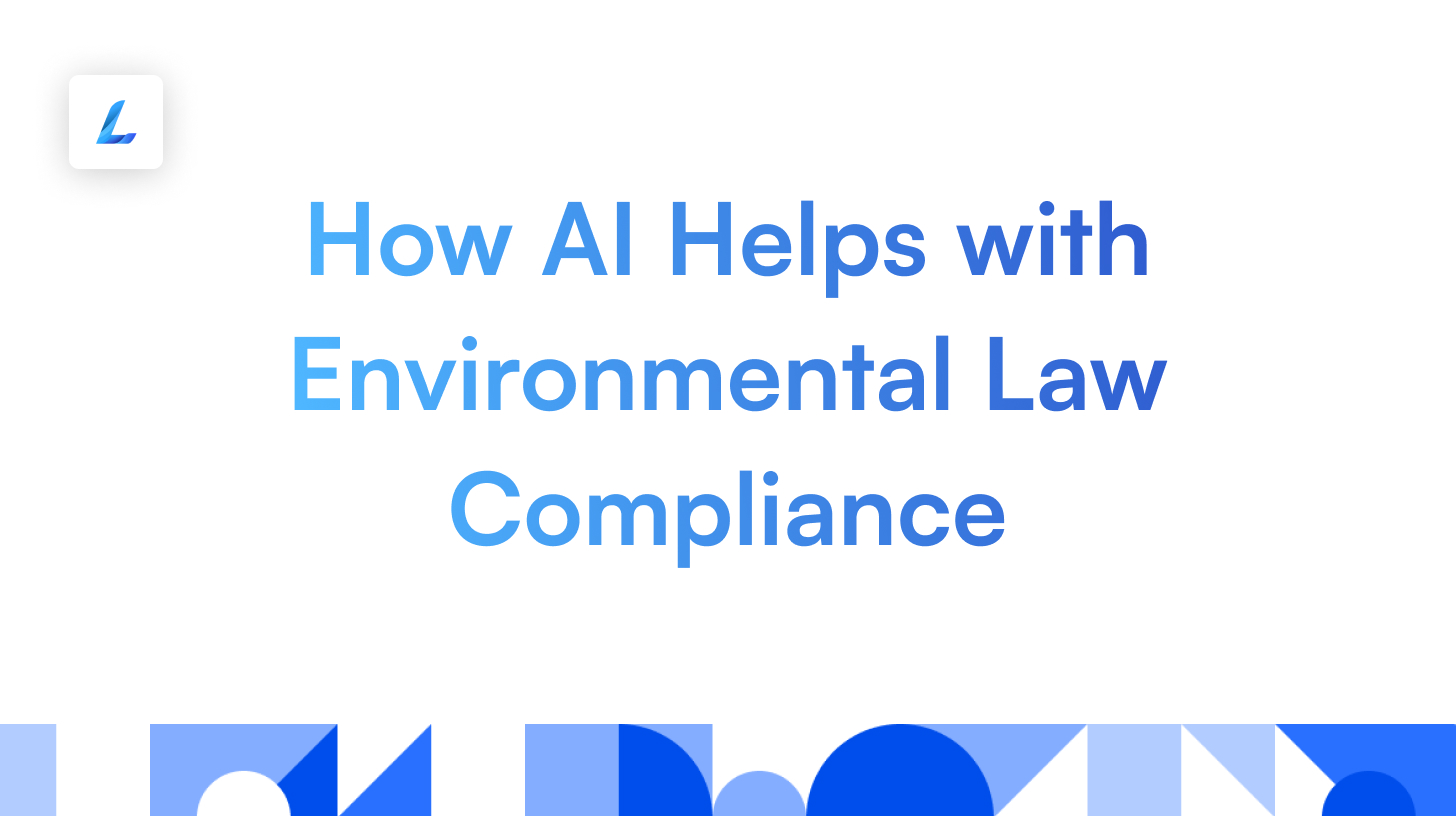In 2020, global environmental fines exceeded a staggering $30 billion, an alarming figure that serves as a wake-up call for industries, governments, and stakeholders around the world. This amount doesn’t just represent financial penalties but also underscores the social, ecological, and reputational damages that non-compliance can inflict. Amid this backdrop, the pressing need to fortify contracts and agreements concerning environmental standards becomes clear. Such documents don’t merely function as binding agreements but as blueprints for sustainable and responsible operations.
Challenges
However, the dynamic and multifaceted nature of environmental regulations presents a daunting challenge. With standards varying across regions, evolving based on scientific research, and being influenced by international treaties, maintaining up-to-date and compliant contracts is a Herculean task. Enter the realm of artificial intelligence—a beacon of hope in this intricate landscape. More than just a technological buzzword, AI offers robust solutions for drafting precise contracts, analysing existing ones for discrepancies, and ensuring that every clause is in alignment with the latest environmental mandates.
As AI tools grow increasingly sophisticated, they promise not just efficiency but also foresight, potentially predicting areas of future concern and ensuring contractual provisions are in place well in advance. This post aims to delve deep into this synergy, shedding light on the transformative potential of AI in reshaping environmental law, particularly in the pivotal arena of contract creation and analysis.
Basics and Definitions
Environmental Law is a vast and critical domain of jurisprudence that has evolved to address the pressing challenges posed by human activities on our planet. At its core, it revolves around regulations and legal principles designed to protect and sustain our natural environment, but its significance goes far beyond mere legislation.
This area of law touches upon various facets that are fundamental to life and the well-being of ecosystems. These include the preservation of air and water quality, which directly affects the health of all living organisms. Waste management principles aim to minimise the harmful effects of human consumption and industrial processes, ensuring that toxins and pollutants do not compromise land or water sources.
Furthermore, the focus on biodiversity ensures the survival of a vast range of species, emphasising the interconnectedness of life and the ripple effects that the extinction of one species can have on several others. Then there’s land use – a critical area that balances developmental needs with ecological sustainability, ensuring that urban expansion and agriculture do not lead to irrevocable habitat loss or soil degradation.
What is Environmental Compliance?
A term that frequently arises in discussions about environmental law is ‘Environmental Compliance.’ At a glance, it denotes the act of adhering to environmental laws, regulations, and standards. However, in practice, it’s the fulcrum on which the balance between development and conservation teeters. Given the intricate and often conflicting interests at play – from industrial growth and job creation to species conservation and climate change mitigation – ensuring compliance is not just challenging; it’s a herculean task.
The importance of environmental law cannot be overstated. As the planet grapples with the adverse effects of climate change, deforestation, and unprecedented biodiversity loss, stringent and effective legal frameworks are our best defence. They don’t merely serve as deterrents with penalties but more importantly, as guides that shape individual, corporate, and governmental actions towards a sustainable future. It’s not just about preserving the environment for its own sake but recognizing that the health and survival of humanity are deeply intertwined with the health of our planet.
Relevant Cases or Historical Perspective
- Case 1: The Deepwater Horizon Oil Spill (2010): This disaster led to myriad lawsuits and settlements. Imagine if AI-driven contract analysis tools had been used to meticulously evaluate initial drilling agreements, possibly highlighting potential risks or non-compliance.
- Case 2: Flint Water Crisis (2014-2019): As lawsuits unfolded, the power of AI could have been harnessed to analyse the water supply contracts, pinpointing accountability faster and ensuring all environmental clauses are duly addressed.
AI’s Integration into the Legal Field
The intersection of artificial intelligence and law marks a new frontier in legal practice. Particularly in the complex realm of environmental law, AI is proving to be more than just a supplementary tool—it’s transforming how legal professionals operate.
In contract creation, AI is proving indispensable. Gone are the days when contracts were solely crafted by humans, laboriously poring over each word. Today, AI-powered platforms can generate intricate contracts, pulling from vast databases of existing legal documents, case laws, and current environmental statutes. The result? Contracts that are not only in tune with the latest legal requirements but also nuanced and tailored to specific situations. This automated drafting ensures that all clauses, even the most easily overlooked, are updated to reflect current environmental laws and standards.
For existing contracts, AI-driven analysis tools are game-changers. Traditional methods of reviewing contracts can be time-consuming and are prone to human error, especially given the voluminous nature of legal documents. However, with AI, contracts can be scanned at unmatched speeds, and more importantly, with unparalleled accuracy. These tools identify areas of potential non-compliance, ambiguity, or even contradiction, providing legal professionals with precise pointers on areas that need attention.
But AI’s utility goes beyond mere drafting and analysis. Predictive algorithms, built on machine learning models, can forecast potential areas of environmental concern based on patterns in data. This allows companies and governments to anticipate issues and address them proactively in their contracts, ensuring that agreements are future-proofed against emerging environmental challenges.
In essence, these AI-driven innovations ensure that contracts, which are foundational to how businesses and governments operate, are not only legally sound but also robustly environmentally compliant. The integration of AI diminishes the probability of oversight, mitigates risks, and provides a safeguard against the monumental repercussions of non-compliance, both environmentally and financially.
Introduction to Legaliser
In the vast ecosystem of AI-driven legal tools, the “Legaliser AI Contract Analyser Tool” stands out as a beacon of innovation. It’s not just another software; it’s a comprehensive solution intricately designed to tackle the unique challenges posed by environmental legal contracts.
Harnessing the power of deep learning algorithms and a vast repository of environmental statutes and case laws, this tool offers a level of detail and accuracy previously unheard of in the legal sector. Whether you’re in the initial stages of drafting a new agreement or knee-deep in the meticulous process of analysing an existing one, “Legaliser” guarantees that every clause, every stipulation, and every term aligns seamlessly with the ever-evolving environmental standards.
For those sceptical of its prowess or keen on witnessing its capabilities firsthand, there’s good news. A limited-time free trial offers a no-strings-attached glimpse into its unparalleled precision and efficiency, providing a firsthand experience of its transformative potential.
Conclusion
In our rapidly changing world, where environmental concerns are no longer just headlines but existential threats, the importance of foolproof contracts in guiding our collective actions becomes paramount. It’s not just about adhering to the letter of the law, but ensuring the spirit of sustainability is echoed in every agreement, every deal, and every partnership.
Artificial Intelligence, especially in its specialised role of drafting and analysing, is no longer a luxury but a necessity. It is the compass that points towards meticulous compliance and foresight. Tools like the “Legaliser AI Contract Analyser” aren’t just technological marvels; they represent our commitment to a greener, more responsible future.
As we stand at the crossroads of technology and environmental responsibility, it becomes evident that the fusion of the two is not just beneficial but imperative. With the backing of AI-driven tools, we aren’t merely navigating the complex labyrinth of environmental law contracts; we’re charting a course towards a more sustainable and secure future. It’s not just about keeping pace with the present – it’s about sculpting a legacy for the generations to come.






